#LabPlanning
Explore tagged Tumblr posts
Text
How to Choose the Right Lab Equipment for Your Research
Equipping your laboratory with the right tools is one of the most important decisions you'll make as a researcher. Whether you’re starting a new project, outfitting a new lab, or expanding existing capabilities, selecting the right lab equipment can greatly impact your research outcomes, productivity, and safety.
With the wide variety of scientific instruments available today, making the right choice requires careful evaluation. This article offers a step-by-step guide to help researchers, lab managers, and technicians make informed decisions when selecting lab equipment tailored to their research needs.
1. Understand Your Research Requirements
Before looking at any product catalogs, first define what your research actually needs. This includes:
Type of research: Biological, chemical, physical, environmental, clinical, etc.
Sample types: Liquids, solids, tissues, gases, microorganisms
Processes involved: Heating, mixing, separation, microscopy, data analysis
Desired outcomes: Are you analyzing, synthesizing, testing, or observing?
Clearly outlining your workflow will help you identify essential instruments and avoid buying unnecessary or incompatible tools.
2. Make a List of Essential Equipment
Based on your workflow, create a checklist of necessary equipment. Typical categories include:
Core equipment – Centrifuges, microscopes, incubators, balances
Support equipment – Hot plates, stirrers, water baths, pH meters
Storage – Freezers, refrigerators, chemical cabinets
Safety – Fume hoods, eyewash stations, autoclaves
Specialized tools – Spectrophotometers, PCR machines, gas analyzers
Rank the equipment by priority: 🔹 Must-have for immediate use 🔸 Nice-to-have for future expansion
3. Set a Budget with Long-Term Vision
Lab equipment is an investment. While price is important, it should be weighed against quality, reliability, and future-proofing.
When budgeting, consider:
Initial purchase price
Installation and calibration
Maintenance and consumables
Warranty and service costs
Software or upgrade licenses
Training requirements
⚠️ Tip: A cheaper unit with poor precision or high maintenance costs may become more expensive in the long run.
4. Evaluate Equipment Specifications Carefully
For each piece of equipment, compare technical specifications. Look for:
Measurement range and accuracy
Capacity (e.g., sample volume, throughput)
Material compatibility (resistance to acids, solvents, etc.)
Speed and power consumption
User interface and software features
Compliance with standards (ISO, CE, FDA)
Always match the specs with your intended application, not just the highest performance values.
5. Consider Lab Space and Utility Requirements
Make sure the equipment fits both physically and operationally in your lab.
Space constraints: Check dimensions, clearance needs, and weight
Power supply: Does it need 110V, 220V, or a dedicated line?
Plumbing or gas supply: Especially for fume hoods or lab ovens
Ventilation: Some devices require exhaust systems
Noise and vibration: For sensitive environments like microscopy labs
Planning utilities in advance prevents costly retrofits or delays.
6. Check for Compatibility with Existing Systems
Ensure the equipment integrates well with your current tools and data systems:
Can it connect to a Laboratory Information Management System (LIMS) or data logger?
Is the software compatible with your computer OS?
Will it fit into your SOPs or automated workflows?
Does it support data export in required formats (.CSV, .XML, etc.)?
Good interoperability improves efficiency and minimizes manual work.
7. Review Brand Reputation and Support
Choose brands with a proven track record in your field. Evaluate:
Product reliability and durability
Ease of use and training resources
Warranty and after-sales service
Availability of spare parts and consumables
Responsiveness of customer support
💬 Ask for references or user feedback from researchers using the same equipment.
8. Consider Regulatory and Safety Compliance
Certain research (clinical, pharmaceutical, food, etc.) must follow strict regulations.
Ensure the equipment is certified (ISO, CE, GMP)
Ask for calibration certificates and documentation
Choose devices with built-in safety features like alarms, lockouts, or temperature limits
Verify it complies with local health and safety guidelines
9. Request Demos or Trial Periods
Whenever possible, request a live demonstration or trial run before committing. This lets you:
Test ease of operation and interface
Verify output quality and repeatability
Confirm fit within your workflow
Identify any training or installation needs
Some vendors even offer rental or leasing options for short-term use.
10. Buy from Authorized or Trusted Suppliers
To ensure quality and warranty support, always purchase from:
Authorized distributors
Direct manufacturers
Reputable lab equipment dealers
For labs in Saudi Arabia and the Middle East, SOMATCO is a trusted supplier offering certified equipment, expert consultation, and after-sales support for a wide range of scientific and research applications.
Bonus Tip: Plan for Future Expansion
Choose equipment that allows you to scale as your research evolves. Look for:
Modular systems
Expandable software packages
Upgrade paths for accessories
Cloud connectivity or remote monitoring options
Forward-thinking equipment choices save time and cost when your lab grows.
#LabEquipment#ScientificResearch#ResearchLab#LabSetup#ScienceTools#LaboratoryEssentials#STEMResearch#ClinicalResearch#LabPlanning#ScienceLabSupplies#LaboratoryTechnology#ChooseWisely#ResearchTools#LabEfficiency#Somatco
0 notes
Text
O Centro de Ciências Humanas e da Educação (Faed), da Universidade do Estado de Santa Catarina (Udesc), abriu inscrições nesta segunda-feira, 19, para o Curso de Cultura e Língua Guarani Mbya, voltado a estudantes da instituição e também para a comunidade externa. O período de inscrição vai até 30 de agosto, por meio de formulário online. As vagas são limitadas e a seleção dos interessados será realizada por sorteio, com reserva para alunos oriundos de ações afirmativas. O curso gratuito ocorrerá sempre às quartas-feiras, das 9h às 11h, a partir de 4 de setembro, nas salas da Udesc Faed. O ministrante será o professor Natan Almeida Evaristo, que tem formação em Licenciatura Intercultural Indígena pela Universidade do Vale do Itajaí (Univali). A ideia de criar o Curso de Cultura e Língua Guarani Mbya surgiu a partir de demanda levantada por alunos de Geografia da Udesc Faed, durante visita realizada na Aldeia Tekoá Itaty, no Morro dos Cavalos, em Palhoça. O objetivo central é abrir diálogo com a comunidade indígena, possibilitando a quebra de preconceitos e valorização dos saberes e da cultura Guarani. “A intenção é não apenas a disseminação linguística, mas a valorização da interculturalidade no ambiente acadêmico. Precisamos quebrar os esteriótipos da vivência e cultura Guarani por conta da população em geral, a partir do diálogo entre as comunidades originárias e a comunidade não-indígena. Quanto mais diálogo, menos racismo”, ressalta Weuler Azara, um dos coordenadores do curso e mestrando do Programa de Pós-Graduação em História (PPGH). A realização do curso é uma parceria entre o Laboratório de Planejamento Urbano e Regional (Labplan), o Laboratório de Estudos Pós-coloniais e Decoloniais (Aya), a Direção de Extensão (DEX) e a Direção-Geral da Udesc Faed. Sobre o professor Natan Almeida Evaristo O professor Natan Karaí Almeida Evaristo é indígena Guarani Mbya. Possui formação acadêmica é em Licenciatura Intercultural Indígena pela Universidade do Vale do Itajaí (Univali). Atua há aproximadamente seis anos na Escola Itaty, localizada em sua aldeia no Morro dos Cavalos, em Palhoça. Por conta da sólida formação e experiência prática, e relação de proximidade com a língua guarani Mbya, Natan possui compreensão profunda da cultura e da cosmovisão Guarani. Sobre a língua Guarani Mbya O Mbya é uma das três variedades modernas da Língua Guarani, da família Tupi-guarani, tronco linguístico Tupi. As outras são o Nhandeva ou Chiripá/Txiripa/Xiripá ou Ava Guarani e o Kaiowa . No entanto, a delimitação entre essas variedades não aparece de modo estanque e consensual. Além disso, os falantes utilizam outras formas para nomeá-las. Nestas variedades, a língua Guarani é falada amplamente em quatro países – Paraguai, Argentina, Bolívia, Brasil –, sendo designada língua oficial do Estado Paraguaio, língua oficial para o trabalho no Mercado Comum do Sul (Mercosul) ao lado do Português e do Espanhol, e língua cooficial do Município de Tacuru – Mato Grosso do Sul – Brasil. De acordo com o Intituto do Patrimônio Histórico e Artístico Nacional (Iphan), em todo o litoral Sul do Brasil, do Espírito Santo até o Rio Grande do Sul, e em muitos pontos da linha fronteiriça do Brasil com a Argentina e Paraguai, e em menor escala com a Bolívia, são encontrada aldeias Guarani nas quais se fala somente ou majoritariamente a variedade Mbya. Assessoria de Comunicação da Udesc FaedE-mail: [email protected] Fonte: Governo SC
0 notes
Text
How to make a laboratory plan?
MAKING A LABORATORY PLAN IS VERY ESSENTIAL TO ALL STUDENTS SPECIALLY TO THEIR CHOSEN STRAND. THE PURPOSE OF THE LAB PLAN IS TO MAKE A PLAN FOR THEIR ACTIVITY THAT THEIR GOING TO INITIATE. SINCE MY PARTNER AND I ARE IN THE SAME STRAND WHICH IS THE CBF ( COOKERY, BREAD AND PASTRY, FOOD AND BEVERAGE SEVICES ) WE’LL BE DISCUSSING THE PARTS OF THE LABORATORY PLAN.
1. Front Page
Definition: Use to identify the contents of your labplan as well as the title and the name of the student.
Example Sentence: I need to do my labplan as soon as possible, so the first task i need to accomplish is the front page.
Illustration:
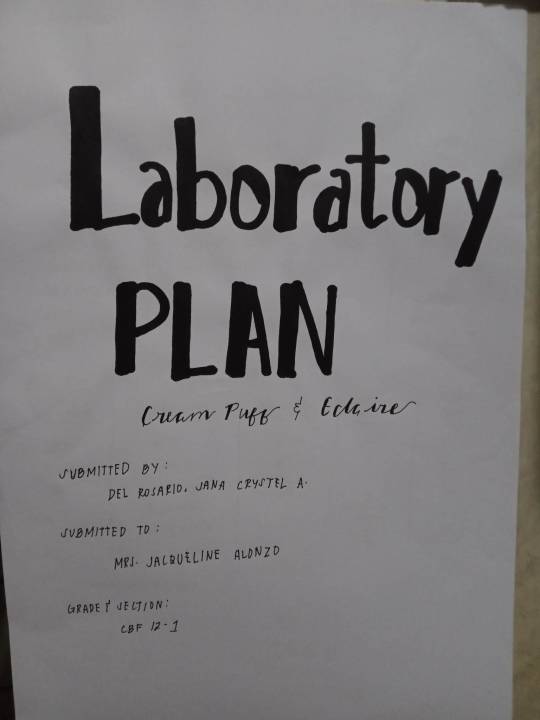
2. Job Title
Definition: An indication of what you're going to do ( Ex. Cream Puff and Eclaires )
Example Sentence: I need to think the best product for my job title.
Illustration:

3. Objectives
Definition: It indicates the goals that you want to achieve.
Example Sentence: I will practice all of that, so for the lab day i'll perform the objectives very well.
Illustration:

4. Tools, Ingredients, Equipments & Materials
Definition: To identify what tools that you're going to use, what ingredients you need to buy, equipments that needed and materials must use.
Example Sentence: Omg! Tomorrow is our lab day so i need to figure it out what tools, ingredients, equipments and materials that i need to bring.
Illustration:
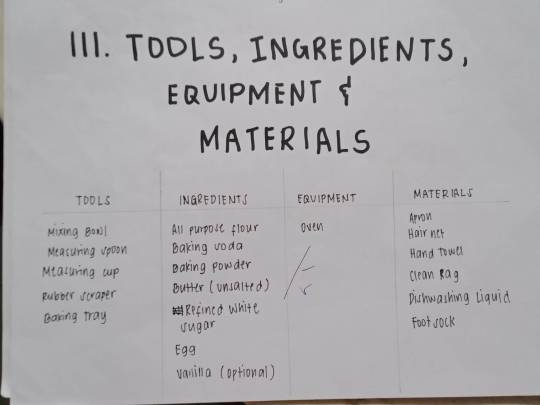
5. Item Specification
Definition: It identifies the accurate information like the items, description, quantity, unit and total cost of the product that you're going to make.
Example Sentence: I realize that i need to know the item specification so that it won't be hard for me to identify it.
Illustration:
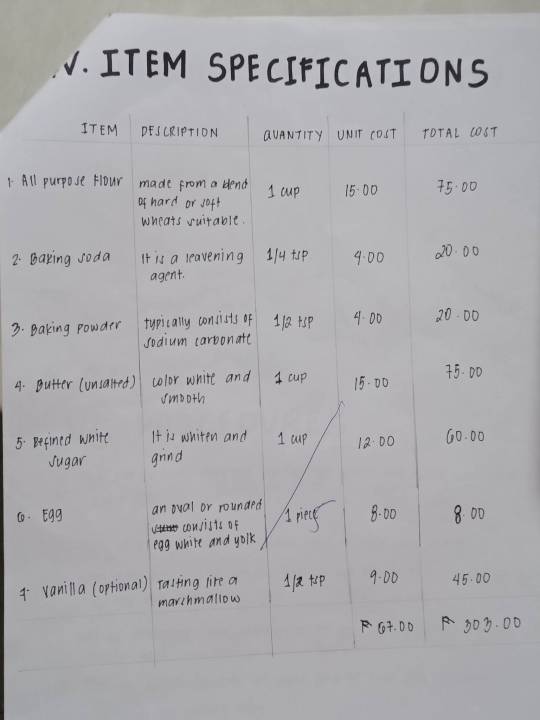
6. Product Illustration
Definition: It illustrates the before and after the job
Example Sentence: In this part, i need to draw the before and after the job so that i can figure it out if my expectation meets the reality.
Illustration:
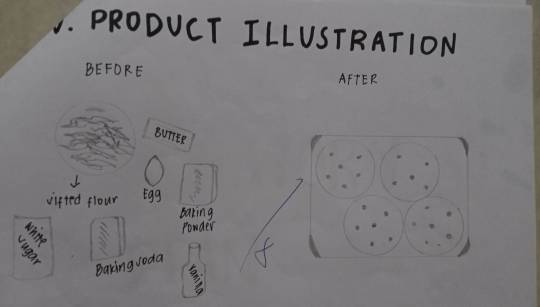
7. Procedure:
Definition: It is the last part of the laboratory plan. It shows the step by step process of the job.
Example Sentence: For our lab day, i need to focus on what is written in the procedure so that i can ensure the right consistency of the product that i will make.
Illustration:
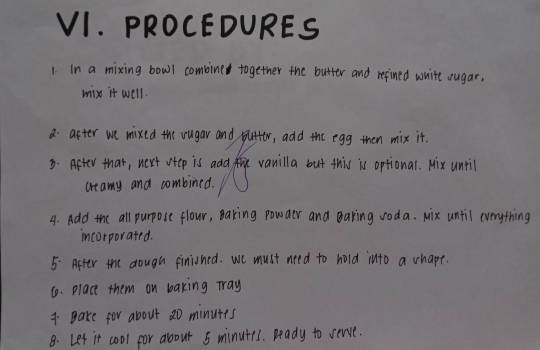
A VIDEO ABOUT HOW TO MAKE A LABORATORY PLAN
youtube
2 notes
·
View notes
Text
Things to Consider When Moving Your Lab in San Francisco
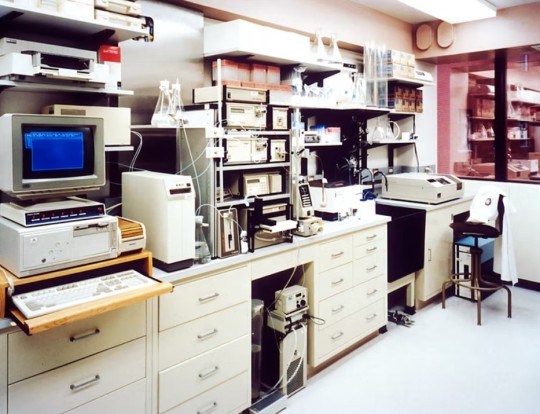
Moving your lab to San Francisco requires utmost care. Lab relocation is critical and delicate. It is good to have the highest levels of oversight. Properly moving your lab equipment ensures a smooth transition while guaranteeing the authenticity of your lab data and research.
If you want to maintain the functionality of your lab while moving, contact effective managers. Biotechnical Services, Inc. is an expert in planning, managing, and preparing lab equipment movement.
Challenges When Moving Your Lab
Many people fail in the oversight stage. Avoid making an unplanned transition to your lab. Without proper planning, you might lose your valuable data and research. You might incur a higher cost and have a lot of hassle moving your lab. Before moving your lab equipment in San Francisco, ensure that you understand the equipment’s sustainability, nature, and importance.
Always have a reliable backup. You will have a reserve in case of a mishap. Proper management helps in overcoming frustrations, unexpected costs, and communication challenges. When moving any lab equipment, consider its importance. Depending on the infrastructure, you might require mechanical, ventilation, electrical, or plumbing equipment.
Fundamental Factors When Moving Your Lab
Planning Forward Movement
Planning the movement of lab equipment in San Francisco allows for cost-effective, time-efficient, and seamless transition. Proper planning is important when coordinating the process. It is imperative to plan the movement and storage of the equipment. Always plan the movement of your equipment according to the frequency of its use. The process improves the productivity of your lab in the new location. In addition, it helps you set up the new lab quickly, be resourceful, and efficiently.
Assessing Possible Problems
When moving your lab, ensure you have efficient communication. Having contact with the whole team is essential. You must also have constant communication with the outsourced company. Ensure to keep your team informed on all the aspects of your project. It allows you to make the necessary changes and resolve any arising issues easily. Furthermore, having effective communication helps you lower your costs.
Some complex lab equipment requires removalists. Constant monitoring of your freight is useful. Monitoring your lab equipment in San Francisco rids you of any issues and makes communication very efficient.
Avoid Using Temporary Labs
Most temporary labs are very cheap and hassle-free. However, the result is a double movement. You will need to move your equipment two times. If you plan your lab movement well, you will not need a temporary lab. In addition, avoiding a temporary lab rids you the problem of money, efficiency, and time.
Effective Steps to Moving Your Lab
Set Up Your Team
When moving your lab equipment in San Francisco, utilize your existing staff. Assign each technical staff concise and clear duties. Each staff should have relevant tasks and duties to handle. To help you lessen this process, select effective team leaders among your staff.
Have essential roles assigned to all members of your team. These roles include:
Lab movement team leader
Logistics leader
Equipment coordinator
Consumables leader
Communication specialist
Furnishing technicians
System engineers
If you want to avoid logistics problems, always have team meetings. It ensures that you maintain effective communication and keep your team leaders aware of the plans. In addition, the meetings with the team lead leader help you relay the information to the rest of the staff.
Maintain Communication
Before moving your lab equipment in San Francisco, inform all the team leaders. The team leaders will keep the rest of the team up to date with the communication. Any changes and decisions and changes will easily reach the rest of your staff.
Have Proper Planning
Record The Specifications of Each Equipment
When planning to move your lab, always consider your equipment’s specifications. These specifications include dimensions, weight, capabilities and specific requirements. Always have a folder with all your lab plans. These plans are critical in preparing and saving your time and costs.
Plan Your Transport
The means of transport is essential when moving your lab. You need to know the rules and guidelines for the movement of lab equipment in San Francisco. When you understand the functioning of your equipment, you can easily plan for the right transport system. Furthermore, you will have the correct cost of the freight and cost charges. You must note that some equipment requires a special transport mechanism.
Equipment Requirements
Avoid Any Contamination
Always make sure that you critically handle your lab equipment. It is important to avoid any contamination during transportation and storage. If you avoid contamination, you will have untainted research and accurate results.
Keep The Calibration
Almost all of your lab equipment require accuracy and precision. It is important to maintain the accuracy of your instruments. After re-installation, perform certain adjustments to maintain the calibration standards. Ensure that you transport your equipment carefully to avoid deviation in measurement.
Comply With The Requirements
To operate a heavily regulated laboratory, you must adhere to some standards. These standards are Goods Laboratory Practice and Good Manufacturing. The standards ensure that you meet legal compliance.
Transportation
Specialized Transport
When moving valuable lab equipment in San Francisco, use a specified transport system. If you don’t have the means of transport, outsource from a reliable transporter. Using a specified transport will eliminate risks such as damage to your equipment and specimen.
Refrigerated Goods
Some refrigerated specimens require certain temperature ranges. When transporting these goods, always keep them according to their temperature patterns.
Hazardous Materials Permits
The government regulations require that you declare and obtain permits for hazardous materials. All hazardous materials should be documented, and special permits obtained before transportation.
Live Animals
You will have challenges transporting wild animals from your lab. Animals need food, water and the right temperature. Always eliminate all threats that might interfere with the lives of your animals.
Chain of Custody
You need to keep certain lab equipment in San Francisco confidential during transportation. These include expensive equipment, research and lab animals. These items require certain legal requirements.
Relocating Planning
Ensure you have the right route when transporting your lab equipment in San Francisco. Plan the specifications and the movement of your equipment.
Tools
Always have the right tools and materials before moving your lab. Have proper research with clarity and usability.
Conclusion
When moving lab equipment in San Francisco, have the right plan. If you consult Biotechnical Service, Inc., you will get the efficient movement of your lab equipment. We offer your valuable equipment proper communication, real-time data, and status monitoring. Contact us today for a premier laboratory experience. We are an accredited and ISO Certified laboratory with experienced technical staff in San Francisco.
Source - https://www.biotechserv.com/things-to-consider-when-moving-your-lab-in-san-francisco/
0 notes